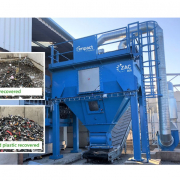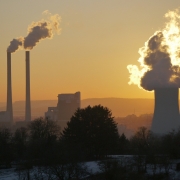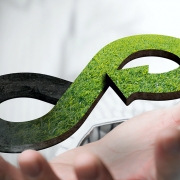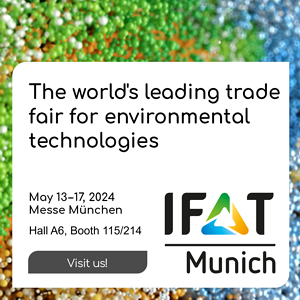Ukraine Waste Management: Yet Dependent on Investments
More than 4,000 landfills, a level of waste processing between 5 and 8 percent, about 15 waste separation lines, 2 waste incineration plants and no waste processing plant: This is how the State Agency for Investment and National Projects of Ukraine (Invest Ukraine) characterized the status of Ukraine`s waste management branch in late December 2011 in a commercial.
But the advertising YouTube clip showed optimism as well, presenting a “Strategy 2020”: The collection rate of solid wastes in cities was intended to rise from 70 to 100 percent and in villages from 10 to 70 percent. The recycling rate was planned to double or triple, the separation rate to increase from 10 to 100 percent and the level of solid waste processing from single-figure to 50 or 70 percent. The burying of unprocessed waste would decrease from 95 percent to zero, the burying rate from 95 to 30 percent. Additionally 20 new waste processing plants were foreseen and the number of landfills lowered to 3,000.
At a development stage
In fact, at that time the Ukrainian market was at a development stage. Invest Ukraine and consulting firm Deloitte certified “many niches and opportunities for introducing new players and strengthening the positions of existing ones”. And – in spite of most of Ukraine’s industries lacking investments – “international investors are highly interested”. So the authors believed “that foreign investments will be very successful and promote economic growth if a favorable investment climate is created in Ukraine”.
Waste potential existed. The 12 million tons of municipal solid waste per year consisted of 37 percent food waste, 25 percent paper and cardboard, 7 percent plastic, 5 percent glass and 4 percent metals. The Ministry of Regional Development and Construction spoke of approximately 2.5 million tons of paper and cardboard, 400,000 tons of ferrous, 25,000 tons of non-ferrous metals and 400,000 tons of plastic in the form of waste in 2011. And a study under the United Nations Development Programme in the same year estimated that the economic effect from the operation of a waste processing and incineration complex could result in 180 million Ukranian Griwna (UAH) for paper and cardboard, 225 million UAH for metals, 40 million UAH for glass, 740 million UAH for polymers, 80 million UAH for textile and 35 million UAH for heat or energy – in total 1.3 billion UAH (formerly 120 million Euro, today about 50 million US-Dollar).
An obsolete treatment infrastructure
However, the infrastructure was undersized. The paper by Invest Ukraine and Deloitte defines 770 registered and 3,000 unauthorized landfills. But a comprehensive study by the International Finance Corporation based on official estimates speaks of 6,700 active landfills. Over 15 percent of them were overloaded and 21 percent failed to meet sanitary requirements; possibilities to expand active landfills were largely limited. And not to forget the number of 30,000 unauthorized dumps. According to the Ukrainian State Sanitary Inspectorate, 85 percent to 90 percent of all landfill sites fail to meet even the most basic of environmental safety standards. Waste collection was realized by more than 1,000 enterprises, most of them either providing services of collection and transportation of waste or involved in waste sorting with low-tech equipment.
In 9 Ukrainian cities waste sorting lines were in operation, and in 19 more towns such facilities were under construction. Aside from 3 percent of household waste separately collected and recycled, 4 percent went to the two incineration plants in Kyiv and Dnipropetrovsk. Meanwhile, only one of former four incineration plants – located in Kyiv – is operational; its service life of 25 years is over, the equipment out of date and the boiler not fully loaded because of high costs compared to disposal. In total, the non-governmental Bleyzer Foundation saw an “obsolete and congested waste treatment infrastructure”, but judged: “The composition of MSW streams in Ukraine does allow for the profitable recovery of recyclable materials.” Or, as news agency Inter Press Service expressed, “Ukraine has no modern waste recycling plants”.
Disposal or recovery system?
To change that situation, waste management went under examination. The International Finance Corporation (IFC) for example published a study on “Opportunities for Ukraine” in 2012, showing two future alternatives: a fully sanitary treatment and disposal system for MSW, established by 2025 at a cost of 13 billion Euro; or a recovery oriented waste management system with a target rate of up to 40 percent, achievable by 2025, requiring 13 billion Euro investment, reducing new landfill capacity by up to 30 percent and generating 300 million Euro in revenues from the sale of recovered materials and energy. But the IFC also remarked the multiple lines of responsibility, the various entities, individual agreements and the missing of any single entity “to channel, enforce and monitor a regional waste management strategy”. Necessary measures should include a market coordination and a tariff setting mechanism, waste recovery incentives, mechanisms for private sector engagement and financing as well as greater public awareness rising.
Ukraine decided upon the recovery version, following the announced long-term goal for the sector to reach EU-accepted waste recycling standards, partially already binding under the EU-Ukraine Association Agreement. Several things have changed since. The Government intended the implementation of a number of legislative initiatives in order to reform and harmonize domestic standards with the relevant EU directives. The nationwide “Clean City” project planned the construction of waste processing plants in 10 regions of Ukraine on terms of public-private partnership: Their expected combined processing capacity of over 2.5 million tons per year should double the amount of waste that the Ukraine incinerated or recycled by 2014.
Affected by the “armed conflict”
Funds of 224.62 million UAH were directed to the development of the waste management sector in 2013, mostly invested in upgrading the park of special vehicles and the container park. In 2012, German experts expected a cumulative market volume for MBT plants of approximately 92 million Euros for new construction and four millions for maintenance. But they had to admit that currently not a single MBT plant was under operation but e.g. in 2014 a big MBT plant, with a capacity of 140,000 tons per year projected by a German company and financed by the German KfW-Bank, would be commissioned. In November 2013 political protests started at the Maidan, in Februar 2014 an interim government took over, whose displacement was answered by Russia with occupation and annexation; since then the Eastern Ukraine is dominated by an “armed conflict”, affecting the economy and policy of the whole nation. Waste problems got less important. Merely one “Background Paper on Financing Waste Management in Ukraine” was launched in 2014 by the Ukrainian Regional Environmental Center.
Infrastructure projects
In August 2016, the Ministry of Regional Development and Construction and Business Sweden delivered a market insight in Ukrainian solid waste management. It reported still 94 percent of solid waste brought to landfills, a third of them not certified. 2.73 percent goes to one incineration plant, three separate incinerators and 20 sorting lines. And 3.2 percent are treated by one recycling plant, 12 biogas systems and 523 cities with collection points for recyclable materials (523 out of 27,500 cities i.e. 2 percent). Two thirds of the landfills are standard; the rest is said to be overloaded, does not meet standards or is illegal; nearly 20 percent new deposit areas are needed. 1,200 waste collection vehicles are “relatively new”, 2,200 “obsolete” and “depreciated”. The financing for solid waste is supplied mostly by local budgets (5,85 million Euro), by state budget (1,59 million Euro) and other sources (1,64 million Euro). However, this funding could be extended by 38 million Euro for a solid waste plant construction in Kharkiv planned under the “Second Urban Infrastructure Project” by the World Bank and a framework loan of 400 million Euro for the “Ukraine Municipal Infrastructure Project” including the solid waste sector, signed by the European Investment Bank.
Today the recycling industry comprises of 1,000 enterprises for collecting and disposing municipal solid waste – 75 percent in private-public-partnerships and 25 percent in private hands. Among them Veolia Ukraine, ABE-Lviv, Remondis` layer Umwelt, SITA and A.S.A. concerning waste recovery. An expert on waste recovery from ABE-Lviv company – Andriy Slonski – commented in 2013 that Ukrainian recycling enterprises process only three waste streams: PET bottles, glass and paper. This has changed little since: Some of the firms also process aluminium. Recycling – says the aforementioned Background Paper – is performed in Ukraine for paper, glass bottles, metals, fluorescent bulbs and, since more recently, plastics. “This works both in the ‚B2B‘ mode and via purchase from citizens at recycling points or from scavengers collecting materials from waste containers.”
A positively changing and exciting market
A new study by German ReTech Partnership balances a backlog in in the sorting sector and in the number of mechanical-biological treatment facilities. And recommends best business opportunities in sanitation and reconstruction of existing landfills, in capturing landfill gas and utilization for energy and in the construction of new modern and sanitary deposit sites. ISWA, the International Solid Waste Association, would not agree with that. In view of new laws implemented in 2016, the association believes in a positively changing and exciting market situation in the Ukraine. In spite of or better: because of low national recycling rates at 5 to 7 percent, the country must increase waste recovery to reach European Standards as per agreement with the EU. What Ukraine mostly needs are 58,700 separation containers, the building of 45 waste recycling plants and the purchase of 658 waste collection vehicles. That is why the World Bank in 2016 called for investments into the Ukrainian waste management industry to the tune of 14.2 billion Euro: for modernization and construction of collection and transportation, recycling and landfill facilities.
Photo: pixabay
GR 32017









